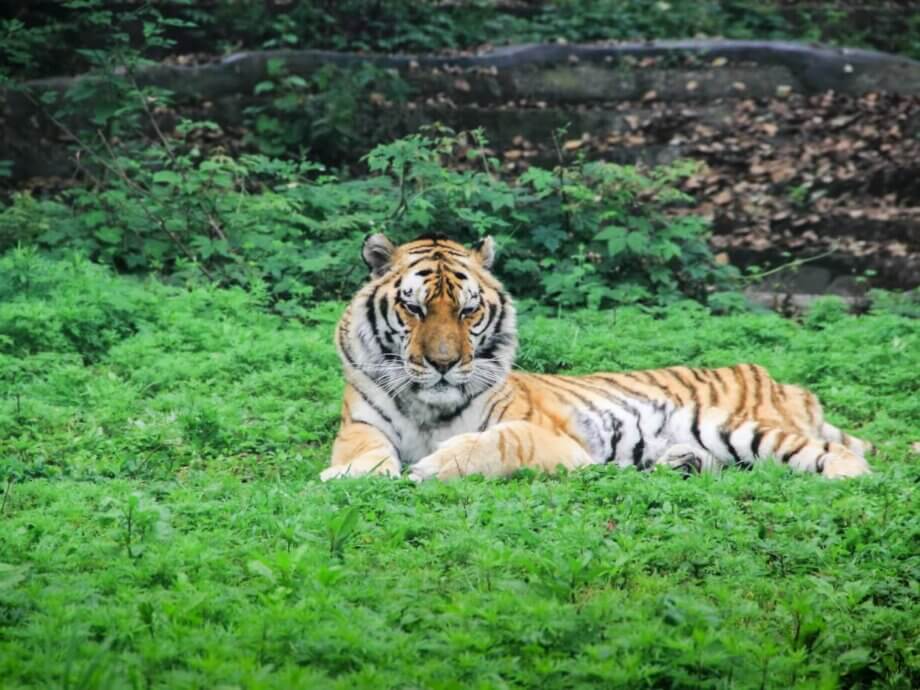The South China Tiger: A Species on the Brink
The South China tiger, also known as the Chinese or Amoy tiger, is one of the world’s most critically endangered big cats. Once roaming vast swathes of southern China, this subspecies now teeters on the edge of extinction. With fewer than 250 individuals remaining nationwide—most in captivity—conservationists have sounded the alarm for decades. The last confirmed sighting of a wild South China tiger in China dates back to the 1990s, underscoring the urgency of efforts to save this iconic animal.
- The South China Tiger: A Species on the Brink
- Inside the Meihua Mountain Rewilding Base
- From Captivity to the Wild: The Rewilding Process
- Training the Next Generation: The Tiger Kindergarten
- Public Engagement and Ecotourism: A Living Laboratory
- Challenges and the Road Ahead
- Why Saving the South China Tiger Matters
- In Summary
Historically, the Meihua Mountain region in Longyan, Fujian Province, was a stronghold for wild South China tigers. Today, it is at the heart of China’s most ambitious rewilding initiative yet: the launch of the country’s largest rewilding training base for South China tigers, a project that could determine the fate of the species.
Inside the Meihua Mountain Rewilding Base
On June 26, 2025, two South China tigers—7-year-old Weiwei and 5-year-old Linlin—were relocated from a compact 50-square-meter enclosure to a sprawling 1,500-mu (100-hectare) rewilding base in Longyan. This move marked the official opening of the largest such facility in China, designed to prepare captive-bred tigers for life in the wild.
The base is a complex, multi-zoned facility. It features two adaptation areas, a quarantine section, and two advanced training zones. The adaptation areas are carefully designed to mimic natural habitats, complete with native forests, dens, watering holes, and feeding passages. These features are intended to rekindle the tigers’ dormant survival instincts, such as hunting, stalking, and territorial patrolling.
Huang Cheng, an assistant engineer at the Meihua Mountain South China Tiger Breeding Research Institute, explains the design considerations:
“Tiger’s jumping ability is quite strong. They can jump about three meters high from a standstill, reaching the middle position between the third and fourth steel cables. Therefore, when designing the enclosure, we chose a height of 4.5 meters and added an inward-bent structure at the top.”
To create a realistic food chain, researchers periodically release prey animals such as sika deer, wild boars, and rabbits into the adaptation areas. The terrain is left as natural as possible, allowing tigers to exercise, patrol, and develop their physical and cognitive skills.
Monitoring is a key component of the project. Eight infrared cameras and sixteen surveillance cameras, supplemented by drones, provide real-time data on the tigers’ behavior and health. These technologies help researchers track the animals’ progress and adjust training regimens as needed.
From Captivity to the Wild: The Rewilding Process
Rewilding is a multi-stage process. After initial adaptation, tigers like Weiwei and Linlin will move to larger, more challenging training areas. Here, they must demonstrate the ability to hunt independently and navigate complex environments. Only those that prove capable will be considered for eventual release into the wild.
This approach is informed by decades of research and international collaboration. The Meihua Mountain South China Tiger Breeding Research Institute, established in 1998, has been at the forefront of these efforts. Over 27 years, the center has successfully bred 76 South China tigers, gradually building a population that could one day return to China’s forests.
Dr. Liang Wei, a leading big cat researcher at the Chinese Academy of Sciences, emphasizes the broader significance of the project:
“This initiative represents more than species preservation – it’s about restoring balance to entire ecosystems.”
By reintroducing apex predators like the South China tiger, conservationists hope to revive the natural food chain and promote biodiversity across the region.
Training the Next Generation: The Tiger Kindergarten
At the heart of the rewilding effort is a unique program known as the “tiger kindergarten.” Here, cubs are raised with a curriculum designed to teach them essential survival skills. Under the watchful eyes of conservationists, young tigers engage in mock hunts, obstacle courses, and socialization exercises. These activities help them develop muscle strength, hone their instincts, and learn to recognize natural dangers.
Thermal cameras and other monitoring tools track each cub’s progress, allowing researchers to tailor training to individual needs. The program has attracted international attention, with experts from around the world contributing to the development of rewilding protocols.
Chen Zhuo, director of the center, explains the philosophy behind the training:
“We simulate real-world challenges they’ll face. Cubs practice stalking prey-shaped targets, develop muscle strength through climbing structures, and learn to recognize natural dangers.”
While challenges remain—particularly in maintaining genetic diversity and ensuring the health of the population—recent successes have boosted hopes for the species’ recovery.
Public Engagement and Ecotourism: A Living Laboratory
The Meihua Mountain South China Tiger Breeding Research Center is not just a conservation facility; it is also a hub for public education and ecotourism. Since its founding, the center has welcomed visitors, especially young students, eager to learn about one of the world’s rarest animals. Each year, up to 150,000 people visit the center, taking part in guided tours, nighttime observation programs, and interactive exhibits at the South China Tiger Museum.
Lin Kaixiong, the center’s director, highlights the importance of public engagement:
“Since its founding, our research center has been open to the public. Now we receive up to 150,000 arrivals annually.”
Through these programs, visitors gain a deeper understanding of ecological conservation and the challenges facing the South China tiger. The center’s educational initiatives have inspired a new generation of conservationists and fostered a sense of stewardship for China’s natural heritage.
Challenges and the Road Ahead
Despite significant progress, the road to recovery for the South China tiger is fraught with challenges. The population remains dangerously low, and genetic diversity is a persistent concern. Conservationists must carefully manage breeding programs to avoid inbreeding and ensure the long-term viability of the species.
Habitat loss and human-wildlife conflict also pose ongoing threats. As China’s economy has grown, forests have been cleared for agriculture and development, shrinking the tigers’ natural range. Reintroducing tigers to the wild will require not only healthy animals but also secure, well-managed habitats and the support of local communities.
International collaboration has played a crucial role in addressing these challenges. Organizations like Save China’s Tigers have pioneered innovative conservation models, including rewilding zoo-bred tigers in reserves abroad. The Laohu Valley Reserve in South Africa, for example, has provided a testing ground for rewilding techniques that are now being adapted in China.
Brad Nilson, Managing Director of Save China’s Tigers, underscores the importance of sustained support:
“As a small charity with a big challenge, we rely on any and all donations. We continue to provide a proper reserve facility, professional staffing, prey, habitat and medical care to the world’s most endangered tigers and remain steadfast in our efforts to eventually find suitable protected reserves in China.”
Why Saving the South China Tiger Matters
The South China tiger is more than a symbol of China’s natural heritage; it is a keystone species whose presence shapes entire ecosystems. As apex predators, tigers regulate prey populations and maintain the balance of their habitats. Their disappearance would have cascading effects on biodiversity, threatening countless other species.
Moreover, the South China tiger holds deep cultural significance. It is the ancestral root of all tiger subspecies and a national icon. Saving the tiger is not just about preserving a single species—it is about safeguarding a living link to China’s past and ensuring a richer, more diverse future for generations to come.
In Summary
- The South China tiger is one of the world’s most critically endangered big cats, with fewer than 250 individuals remaining, mostly in captivity.
- China has launched its largest rewilding base for South China tigers in Meihua Mountain, Fujian Province, aiming to prepare captive-bred tigers for eventual release into the wild.
- The base features adaptation areas, natural habitats, and advanced monitoring systems to help tigers regain survival skills.
- Rewilding efforts include a “tiger kindergarten” where cubs learn essential hunting and survival behaviors.
- Public engagement and ecotourism at the center foster awareness and support for conservation.
- Challenges remain, including low population numbers, genetic diversity, habitat loss, and the need for international collaboration.
- Saving the South China tiger is crucial for ecological balance, biodiversity, and cultural heritage in China.












